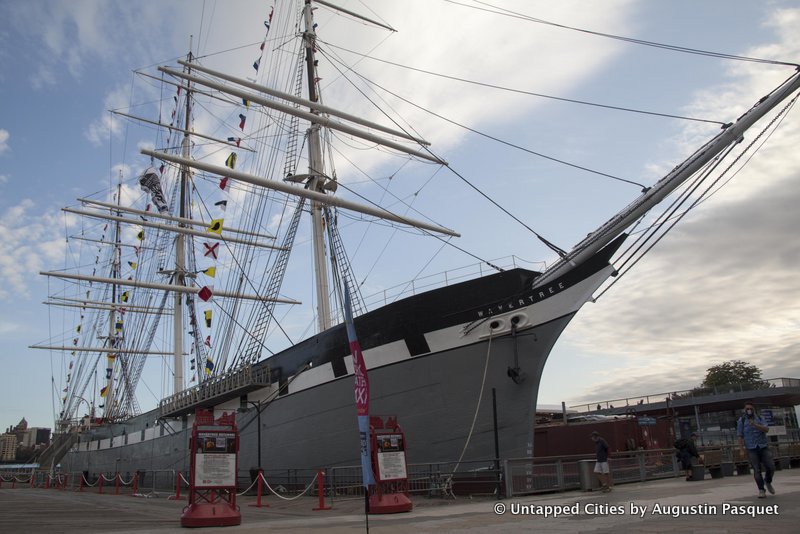There is a beautiful new resident at South Street Seaport and her name is Wavertree. The Wavertree was built in 1885 and has a historical connection to New York City, which is more than the beloved Peking (which left the port in August) could boast. It arrived in New York City in 1895 en route to Calcultta with jute cargo aboard. The ship was acquired by the South Street Seaport Museum in 1968 and went through a 16 month restoration, $13 million restoration at Caddell’s Dry Dock and Repair Co. on Staten Island. She returned to port this past weekend and we were given a special walk through with South Street Seaport Executive Director, Jonathan Boulware, and the museum’s historian William Roka. Boulware is a rare breed – an urban explorer and seafaring one, who used to sail large ships similar to the Wavertree.
Tomorrow evening, the South Street Seaport will be hosting a toast to the Wavertree aboard the renovated flagship vessel with cocktails, hors d’oeuvres, oysters bar, cocktails, and period music from the Knickerbocker Chamber Orchestra. Tickets are $250 but you get $100 off with this discount code link! Untapped Cities will also host a behind the scenes tour of the Wavertree where you will get to visit off-limits parts of the ship, including the impressive hull. Sign up for advance notice here:
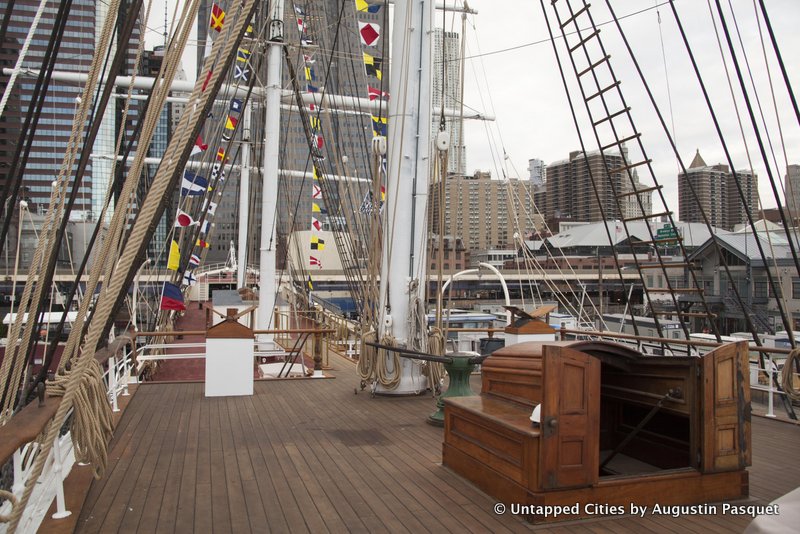
“These are the kinds of ships that built New York,” says Boulware, and sweeps his arm over the waterfront to get us to imagine a bustling port of tall ships, lined one after another. He reminds us that the seaport was the first 24 hour district in New York, and the phrase “the city that never sleeps” began here. There was a “trifecta” of finance, sea trade and the printing press business all located in the dense port. Boats like the Wavertree would bring in cargo like tea, coffee molasses, grain, rice, cotton, kerosene and more. She was built originally to transport jute from the East India (now Bangladesh) to the British islands but shortly entered the “tramp trade,” meaning she would take any cargo as long as it was profitable.
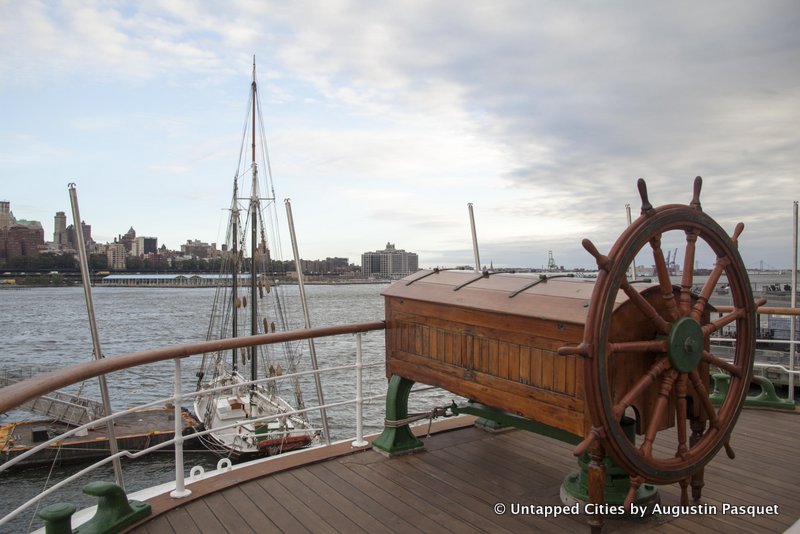
In terms of the restoration, the wood decks are new and the rigging and masts were rehabilitated using 19th century technology. If you put your hands on the ropes on the side of the boat, you can smell the distinctly seafaring scent of Stockholm pine tar – “sailor’s perfume,” says Boulware. The steering wheel is original, with one replaced spoke, and its original steering gear. Other elements, like the sails and some ropes, mix modern materials with original techniques, often to allow them to last longer.
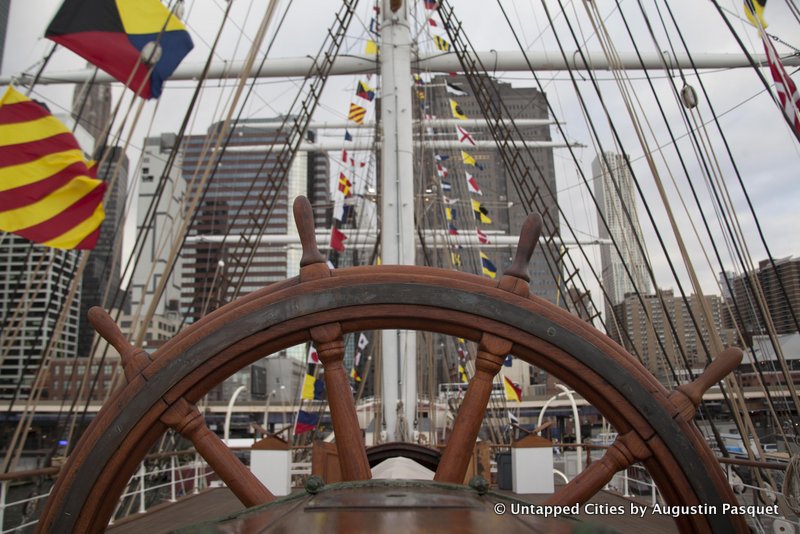
A ship like this would have had maybe a crew of thirty, depending on the needs of the route. The officer’s accommodations, captain’s cabin and saloon, below aft, are still under renovation but you get a sense of the seafaring chanties that must have been sung when you see the wood paneled walls and details down below. The renovations there should be complete in a few weeks, revealing the original joinery between the wooden walls, original beams, and signage. Metal spandrels with the initials RWL, for the R.W. Leyland shipping company that the Wavertree sailed for, were recreated out of poured lead from a mould of an original.
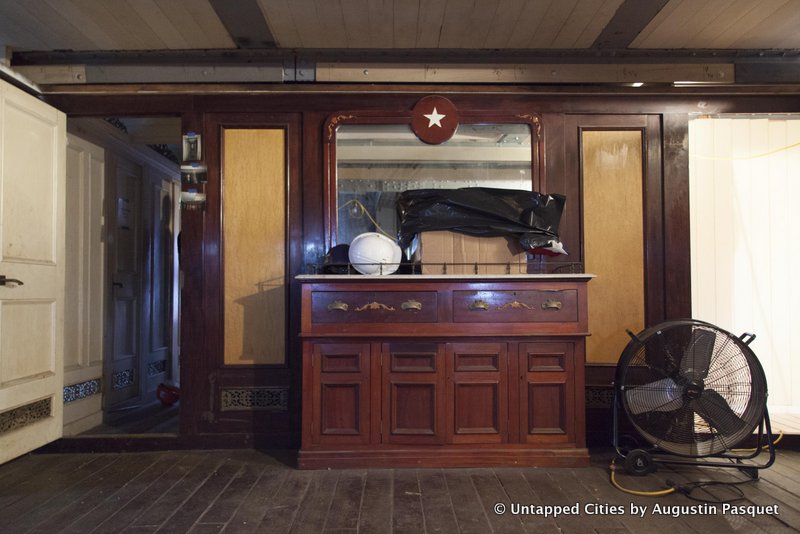 The saloon
The saloon
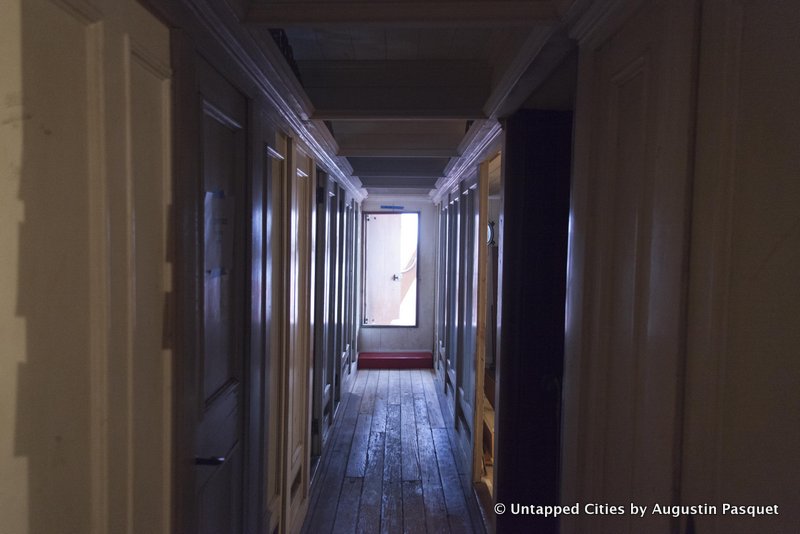 Hallway of the officers’ accommodations
Hallway of the officers’ accommodations
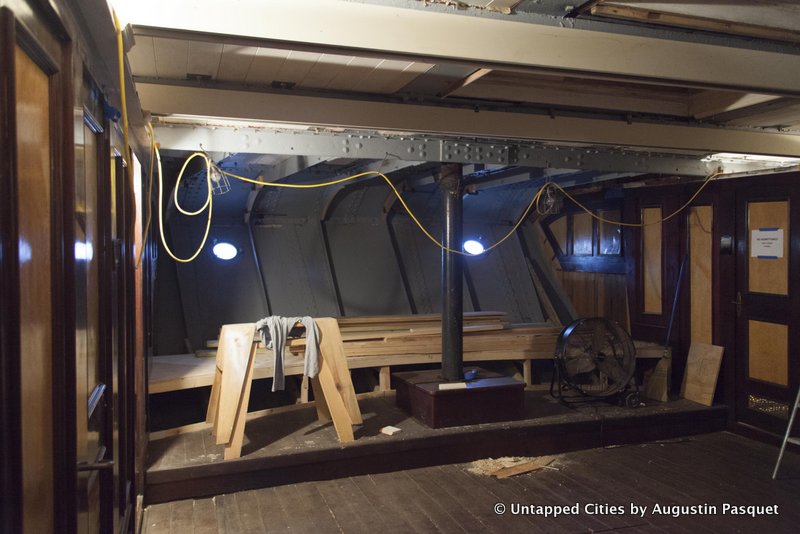
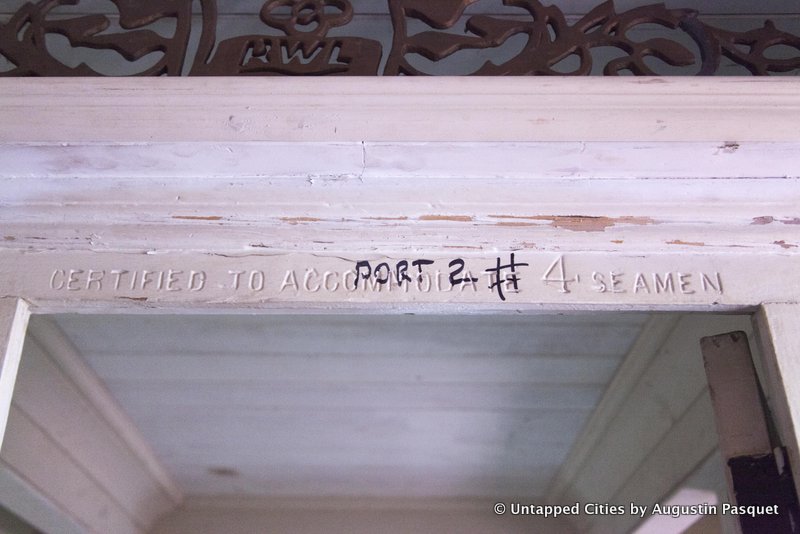
Boulware says that the Wavertree was already slightly old-fashioned when it set sail the first time, with large upper sails, topgallants, nicknamed “widowmakers” for how dangerous they were. Boulware read a Spanish article about the Wavertree which referred to the topgallants as “assassin sails.” The new sails made for the Wavertree are a plastic replica of canvas that can withstand rotting, with many details sewn by hand. The flags on the ship “very carefully” say nothing, as combinations of these flags are used in real sailing parlance to indicate different messages, including SOS messages.
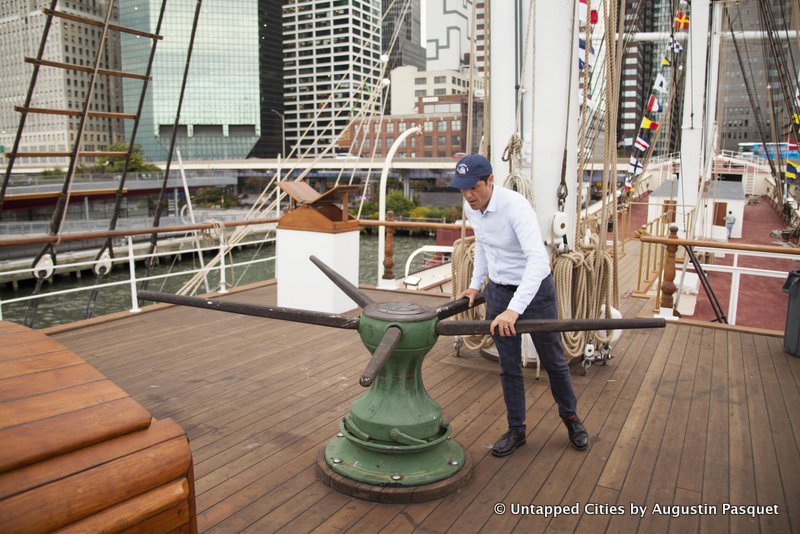
A two-speed capstan on the upper deck functioned like a “human powered winch,” says Boulware, with ten people easily working it. We tried it out together as he demonstrated how crew would use this to hoist a rope. A catwalk was not part of the Wavertree when the South Street Seaport acquired it but it would have been in the original ship and was recreated for the renovation.
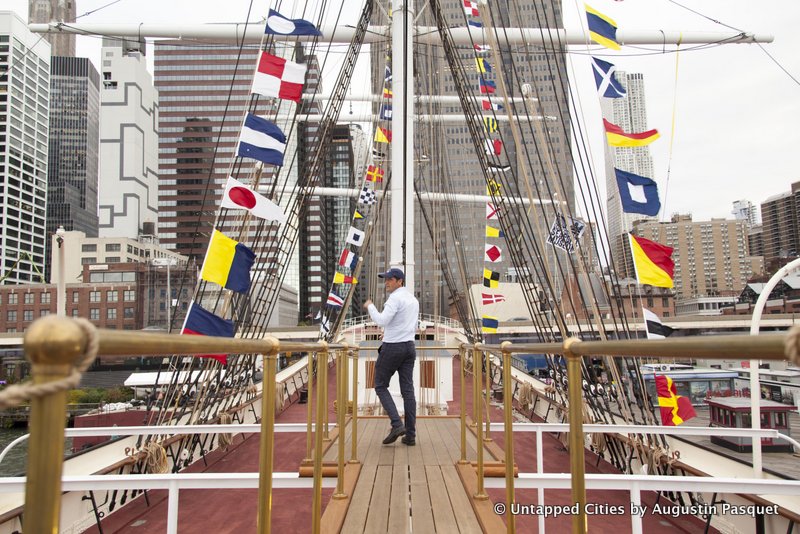 Wavertree’s catwalk
Wavertree’s catwalk
The ‘tween deck, between the main deck and the hull, has an all new floor made of steel. The material is not authentic to the original ship, which would have had wooden decks, but is made to resist water damage and is reversible should the Seaport Museum want to reverse the change. “Keeping the water out of the ship is really the first job in keeping these ships afloat,” Boulware explains. The wrought iron plates of the hull were riveted together by hand and if you look closely, you can see how they overlap each other – and the sheer number of rivets that hold the ship together.
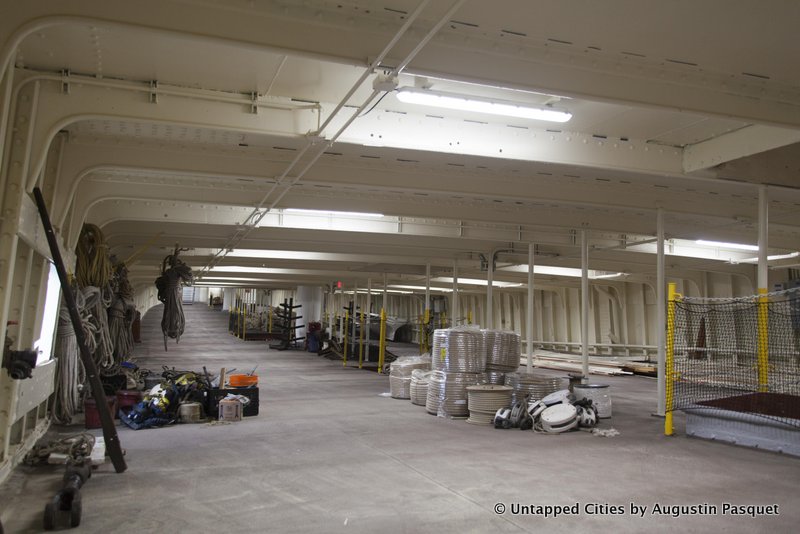 The ‘tween deck
The ‘tween deck
He also elaborated on the complexity of loading a cargo ship that carried multiple types of goods at once – some would contaminate each other, others might ignite depending on what it was next to. He also showed us clips that helped hold the cargo away the edge of the ship for water prevention – which could cause coal to spontaneously ignite or rice to literally burst an iron ship.
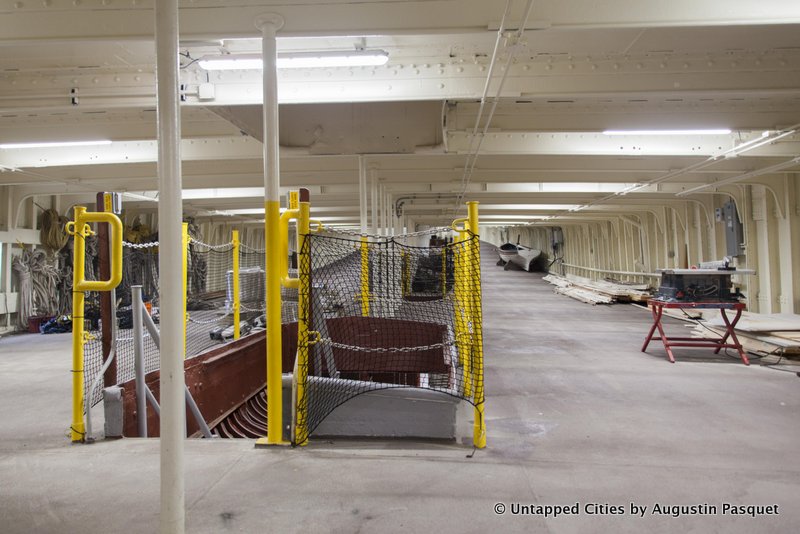
We were then allowed into the hull, an area of the ship that will remain off-limits to the public (unless you take our upcoming tour exclusively on Untapped Cities with the South Street Seaport Museum – sign up for advance notice below). “There isn’t a ship in the world that has a space like this,” Boulware announced, before running to the other end of the cathedral-like space to show us just how large this space is. Here, you can see the wrought iron bones of the ship, the original water tank in roughly its proper position, the hatch where the cargo would go down, and part of where the anchor chain would be stored. A modern vent has been added to keep the moisture down.
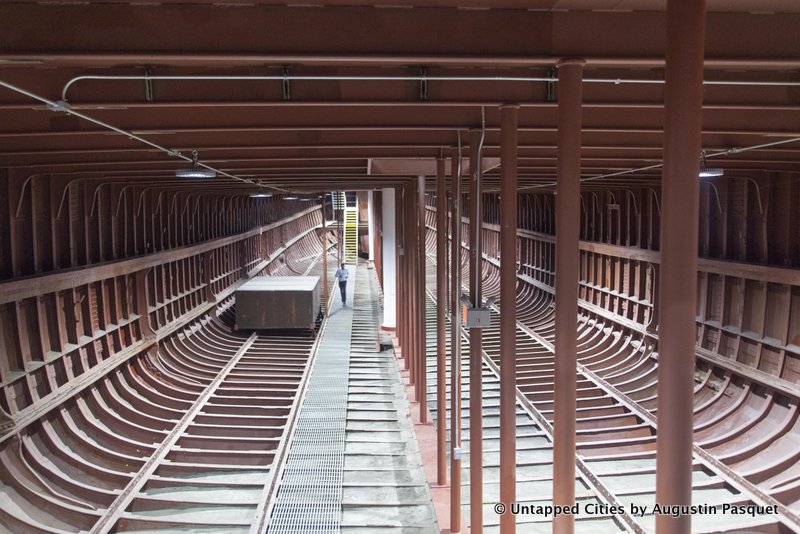
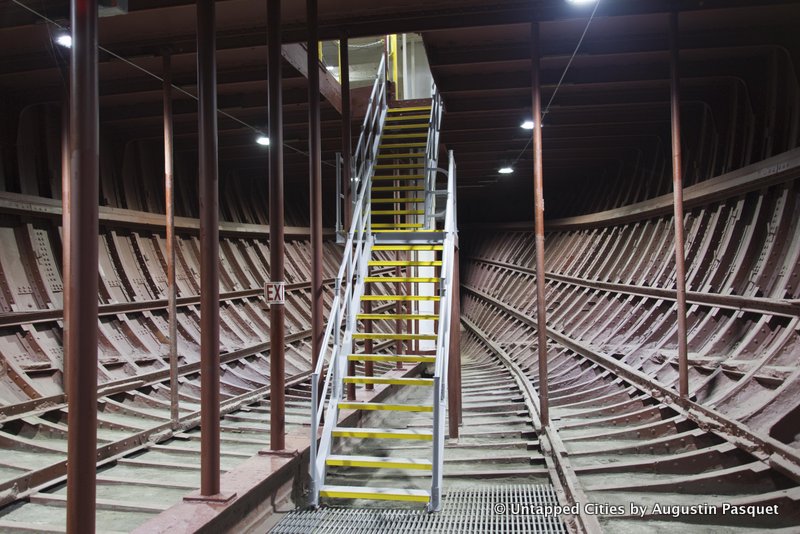
The plan, a few years down the road, would be to actually sail the Wavertree again. Next, is to get the sails up and the South Street Seaport is looking for committed volunteers to help continue the renovation of the Wavertree. We livestreamed our visit in partnership with The Urbanist and we’ll be back with live videos about the Wavertree soon.
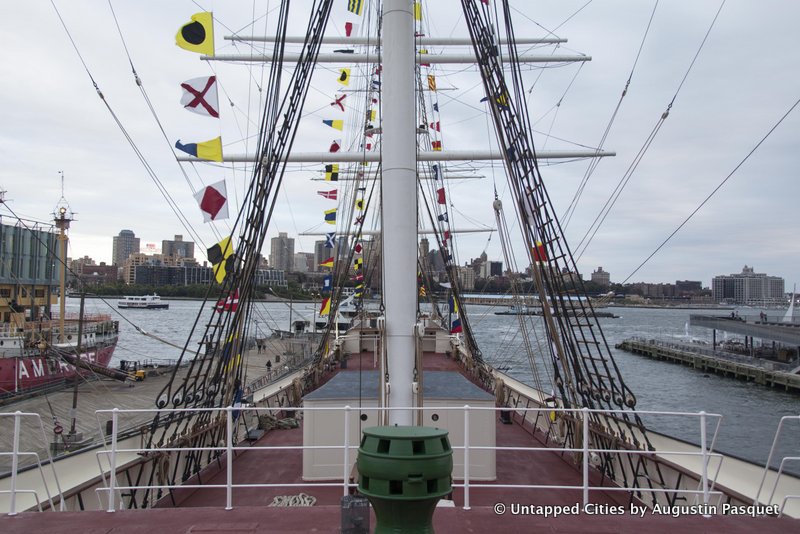
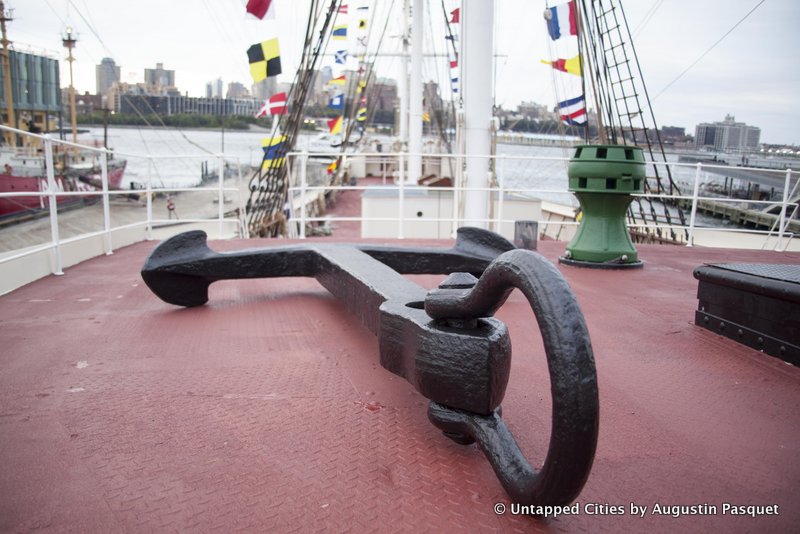 One of the two anchors, weighing between 4000 and 5000 pounds
One of the two anchors, weighing between 4000 and 5000 pounds
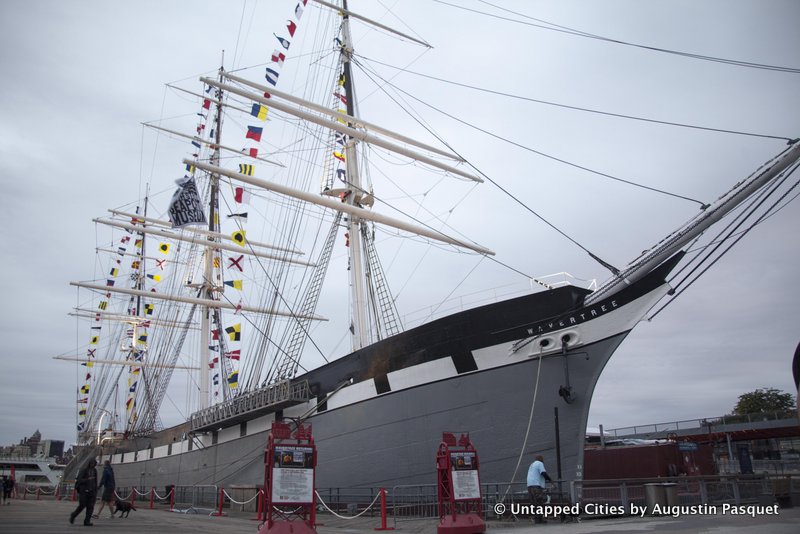
To see more, join us on our upcoming behind the scenes tour and don’t miss the Wavertree cocktail on September 29th ($100 discount from Untapped Cities!)
Next, check out 5 Wicked Secrets of the South Street Seaport. Read about the departure of The Peking, which is currently in Staten Island getting derigged before its return to Hamburg, Germany.






